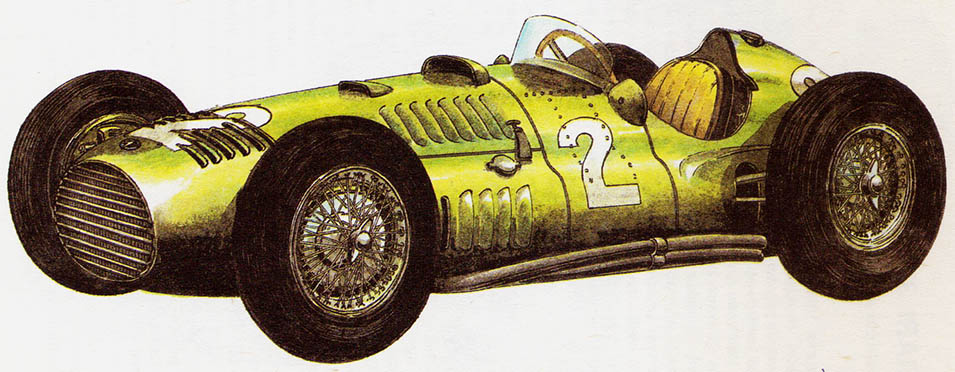BRM V-16 – year 1949
British Racing Motors, Lincolnshire, Bourne, United Kingdom.
W 1946 year, on the initiative of Raymond Mays and Pierre Berthon, the company was established, aimed at constructing your own, british formula car 1. British Racing Motors organization, (abbreviated as BRM) she acquired almost for her idea 160 British car manufacturers and their accessories. The result was a prototype that was presented to the public for the first time in December 1949 year. Constructor Berthon equipped the new BRM automobile with a sixteen-cylinder engine with a compressor, which was quite remarkable for the engine capacity of 1496 cm3. The V-shaped engine thus had a cylinder capacity of only 93,5 cm3. All rotating and vibrating elements have also been reduced proportionally, thereby allowing the engine to be switched to 10 000 RPM. Diameter cylinders 49,53 mm and piston stroke 47,8 mm were arranged in four blocks with an opening of 135 °. The two overhead camshafts required four camshafts. The originally planned gasoline injection has been replaced by two horizontal SU carburetors. A two-stage Rolls-Royce centrifugal compressor filled the cylinders under pressure 400 kPa and made it possible to achieve the compression ratio 7,5 : 1 engine power 294,4 kW (400 KM) by 10 000 RPM. A year later, this value was already 316,5 kW (430 KM) by 11 000 RPM. However, it could only be used in a narrow range of revolutions.

British Racing Motors, Lincolnshire, Bourne, United Kingdom.
The vehicle had a plate clutch, driven by a gear reducing the engine speed to half, and a five-speed gearbox with locking mechanism to the differential. The front wheels were independently suspended on longitudinal Porsche-type wishbones, the rear axle was stiff, Type of Dion. For the first time, the wheels were sprung on hydropneumatic lockheed springs that also acted as shock absorbers. The hydraulic brakes were initially drum brakes, later disc, typu Girling. A tubular frame supported the lightweight aluminum body. The car reached its maximum speed 305 km/h. The empty vehicle weighed 815 kg, and in the following versions only 700 kg.
The BRM V-16 made its first appearance in the International Trophy at Silverstone in 1950 year. Unfortunately, player Raymond Sommer had to withdraw from participation due to a defect. The first victory of this great hope for the British car industry was Parnell's participation in the Woodcote Cup race in Goodwood this year. W 1951 of the year at the British Grand Prix, BRM cars took fifth and seventh place.